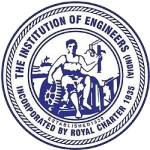The Adaptive dual layer sliding mode control for Ball on plate system driven by shape memory alloy wire
Abstract
This paper presents a dual-layer adaptive sliding mode control for the ball on plate system which is driven by a Shape Memory Alloy (SMA) wire actuator. Due to the peculiar properties of the SMA actuator, the conventional heavy actuators are replaced. The proposed dual-layer controller is responsible for mitigating the external disturbances and uncertainty of the system, which has the highest degree of nonlinearity by itself and due to the peculiar characteristics of the SMA actuator. This work focuses on the construction of the ball on the plate system with an SMA wire actuator implemented with dual-layer SMC. The design was then validated by experimentation using Simulink/MATLAB™.
Downloads
References
Arindam Das and Prasanta Roy “Improved Performance of Cascaded Fractional-Order SMC over Cascaded SMC for Position Control of a Ball and Plate System” IETE Journal of Research, vol.63, no.2, pp. 238–247,2016
Edward C., and Shtessel Y., “Adaptive dual-layer supertwisting control and observation,” International Journal of Control, vol..9, no. 9, pp.1759-1766, 2016.
Ehsan Ali and Narong Aphiratsakun,, “Ball on plate balancing robot,” Proceedings of the 2015 IEEE Conference on Robotics and Biomimetics, Zhuhai, China, December 6-9.
Jeon J., and Hyun C., “Adaptive sliding mode control of ball and plate systems for its practical application,” IEEE 2017 2nd International Conference on Control and Robotics Engineering (ICCRE) - Bangkok, pp. 119–123.
Luis Morales, Oscar Camacho, Paulo Leica and Danilo Chávez, “A sliding-mode controller from a reduced system model: ball and plate System Experimental Application,” In Proceedings of the 14th International Conference on Informatics in Control, Automation and Robotics (ICINCO 2017) – vol. 1, pp. 590-597.
Ma, Y.-J., Zhao, H., & Li, T., “Robust adaptive dual layer sliding mode controller: Methodology and application of uncertain robot manipulator,” Transactions of the Institute of Measurement and control. https://doi.org/10.1177/01423312211025330,2021
Raparelli T., Zobel P.B., and Durante F., “Design of a parallel robot actuated by shape memory alloy wires,” Materials Transactions, vol. 43, no. 5, pp. 1015–1022, 2002.
Rashied Z., Hamees M., Hassan M.U., Hameed S., Khatri N., “Real time implementation of robust PID controller for stabilization of ball balancing beam,” International Journal of Conceptions on Information Technology and Computing. vol. 4, no.2, pp. 6-9, 2016.
Roslan B. S., Amirtham V., Nagarajan T., and Hashim F. M., “SMA actuator technology application in stewart platform construction,” Journal of Applied Sciences, vol. 11, no. 23, pp. 3783–3790,2011.
Sen B., Turker T., “A comparative study on the nonlinear control of ball and plate, IEEE 2018 23rd International Conference on Methods and Models in Automation & Robotics (MMAR), pp. 585–590.
Xuguo Jiao, Qinmin Yang, Wenchao Meng, Siliang Li, Yun Shen, “Adaptive dual-layer sliding mode control for wind turbines with estimated wind speed,” IFAC-PapersOnLine, vol. 53, no.2, pp.12133-12138, 2020.
Yuan D. and Zhang Z., “Modelling and control scheme of the ball-plate trajectory-tracking pneumatic system with a touch screen and a rotary cylinder,” Control Theory and Applications, IET, vol. 4, no. 4, pp. 573–589, 2010.
Copyright (c) 2021 Banu M, Then Mozhi G, Dhanalakshmi K

This work is licensed under a Creative Commons Attribution 4.0 International License.
I/We agree with the provision of the Bye-Law 118 of The Institution of Engineers (India) which states that copyright of each paper published in Institution Journal or Annual Technical Volume in full or in Abstract at its centres shall lie with the Institution.

